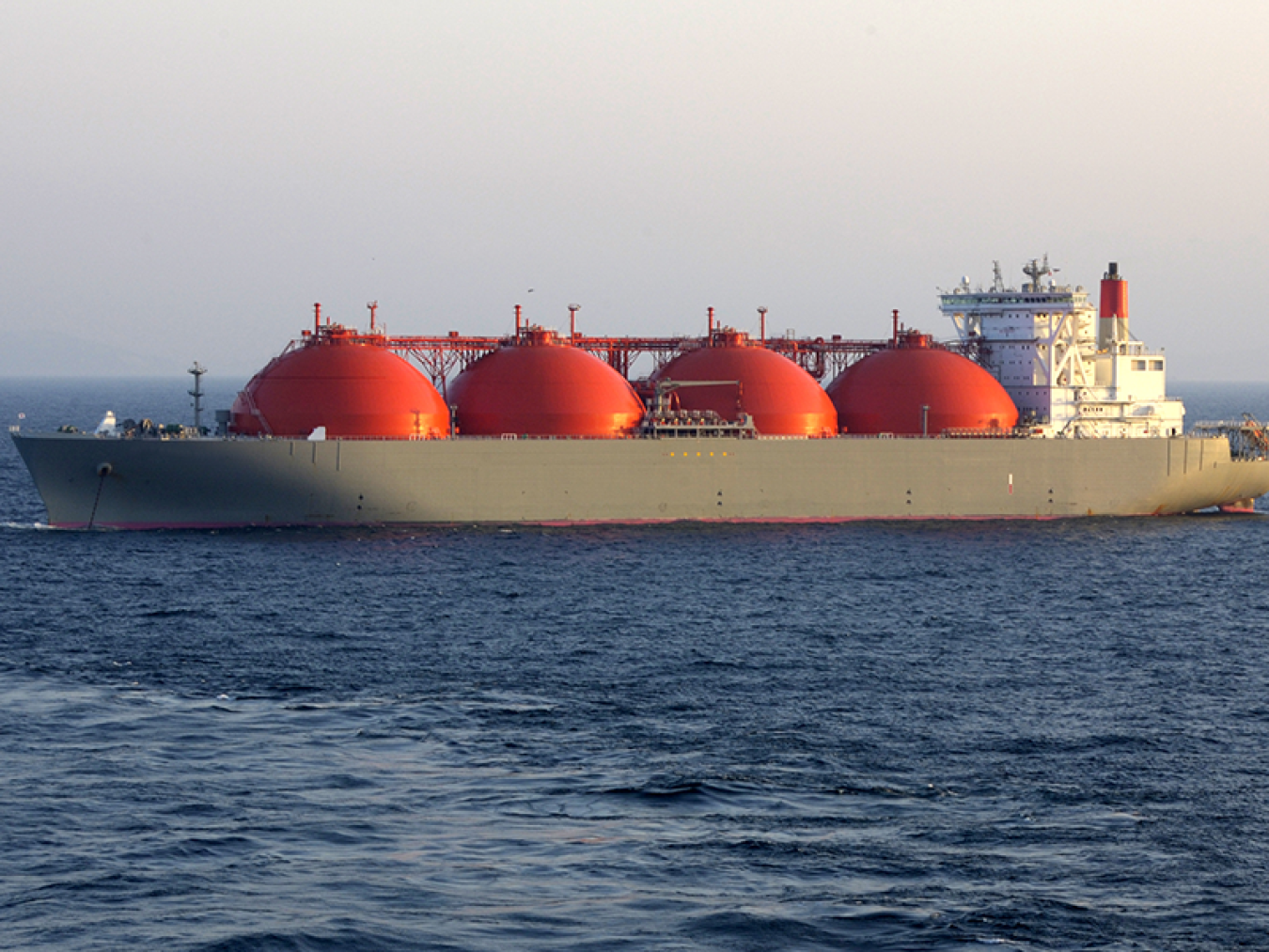
Today, the United States is the world’s largest producer of natural gas. Natural gas supplies about 1/3 of the United States’ primary energy consumption, with its primary uses being heating and generating electricity. While the majority of natural gas is delivered in its gaseous form via pipeline in the United States, the growth in the international market for natural gas has given rise to the use of natural gas in a liquefied form, or LNG.
LNG Basics
Liquefied natural gas (LNG) is natural gas that has been cooled to a liquid state, at about -260° Fahrenheit, for shipping and storage. The volume of natural gas in its liquid state is about 600 times smaller than its volume in its gaseous state. This process makes it possible to transport natural gas to places pipelines do not reach.
Liquefying natural gas is a way to move natural gas long distances when pipeline transport is not feasible. Markets that are too far away from producing regions to be connected directly to pipelines have access to natural gas because of LNG. In its compact liquid form, natural gas can be shipped in special tankers to terminals around the world. At these terminals, the LNG is returned to its gaseous state and transported by pipeline to distribution companies, industrial consumers, and power plants.
LNG Trade
For large-volume ocean transport, LNG is loaded onto double-hulled ships, which are used for both safety and insulating purposes. Once the ship arrives at the receiving port, LNG is off-loaded into well-insulated storage tanks, and later regasified for entrance into a pipeline distribution network.
LNG can also be shipped in smaller quantities, usually over shorter ocean distances. There is a growing trade in small-scale LNG shipments, which are most commonly made using the same containers used on trucks and in international trade, specially outfitted with cryogenic tanks. Other small-scale LNG activities include “peak-shaver” liquefaction and storage facilities, which can hold gas compactly for when it is needed in local markets in the U.S. during times of peak demand. LNG is also sometimes imported or exported by truck from this kind of facility.
In 2020, the U.S. exported almost 2,400 billion cubic feet (Bcf) of natural gas in the form of LNG in large LNG tanker ships, along with a small quantity shipped by container or in trucks. In total, as of August 2021, U.S. LNG has been delivered to 40 countries on five continents. The U.S. also still imports some LNG, mostly to New England, a region of the country constrained by limited pipeline and storage capacity.
DOE's Role
The Department of Energy has regulatory responsibilities related to LNG. Companies that want to export natural gas must get authorization to do so from DOE’s Office of Fossil Energy and Carbon Management (FECM). The Natural Gas Act (NGA) requires DOE to make public interest determinations on applications to export LNG to countries where the U.S. does not have existing free trade agreements. FECM’s natural gas import-export regulatory program is implemented by the Division of Regulation in the Office of Regulation, Analysis, and Engagement.
There are two standards of review under the NGA for LNG export applications, based on destination countries. Applications to export LNG to countries with which the United States has a free trade agreement (FTA countries) or to import LNG from any source are deemed automatically in the public interest. The NGA directs DOE to evaluate applications to export LNG to non-FTA countries. DOE is required to grant export authority to non-FTA countries, unless the Department finds that the proposed exports will not be consistent with the public interest, or where trade is explicitly prohibited by law or policy. DOE acts on long-term LNG export applications to non-FTA countries after completing a public interest review that includes several criteria, including economic and environmental review of the proposed export. Typically, the Federal Energy Regulatory Commission (FERC) has jurisdiction over the siting, construction, and operation of LNG export facilities in the U.S. In these cases, FERC leads the environmental impact assessments of proposed projects consistent with the National Environmental Policy Act, and DOE is typically a cooperating agency as part of these reviews. Obtaining a DOE authorization to export LNG to non-FTA countries is an important step for most projects in their path toward financing and construction.
Some of the companies that have LNG export authorizations from DOE have not reached final investment decisions on their projects. Construction of large facilities takes years to complete and costs billions of dollars. A complete list of long-term LNG export applications and their current status can be found in DOE’s Summary of LNG Export Applications.
DOE also promotes market transparency with published reports on LNG export volumes, destinations, and prices in its LNG Monthly Report. The first-ever exports of domestically-produced LNG from the lower-48 states occurred in February 2016. Cheniere Energy’s Sabine Pass Liquefaction, LLC exported the first LNG tanker cargo from the Sabine Pass LNG Terminal in Louisiana, with a shipment to Brazil.
LNG projects that have DOE authorizations report their status and construction progress to the Department twice per year via Semi-Annual Reports. Customers wishing to purchase LNG from the United States can contact one of the companies that is authorized or is seeking export authority, as listed in the Online Docket Room.

